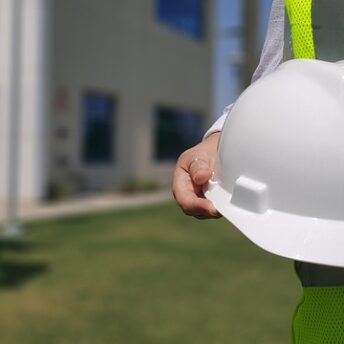Blackstone Solicitors understands that navigating the financial aspects of property development in England and Wales can be complex. Two key funding mechanisms, Section 106 agreements (S106) and the Community Infrastructure Levy (CIL), play a significant role in supporting infrastructure provision alongside new developments. In this article, S106 And CIL, we take a look at the process and mechanism involved.
Free Initial Telephone Discussion
For a free initial discussion with a member of our New Enquiries Team, get in touch with us today. We are experienced in dealing with all the legal aspects of CIL and S106, and once instructed, we will review your situation and discuss the options open to you in a clear and approachable manner. Early expert legal assistance can help ensure you are on the best possible footing from the start and also avoid the stress of dealing with these issues on your own. Simply call us on 0345 901 0445 or click here to make a free enquiry and a member of the team will get back to you.
S106 Agreements: Targeted Infrastructure Contributions
Section 106 agreements, authorised by Section 106 of the Town and Country Planning Act 1991, are legally binding contracts between a developer and a local planning authority. They form a planning obligation, meaning they are a condition of granting planning permission for a development project. S106 agreements outline the additional measures a developer agrees to undertake alongside their development. These measures can encompass various aspects, with a key focus on infrastructure contributions.
- Targeted Infrastructure: S106 agreements typically address infrastructure needs directly linked to the development’s impact. For example, a new housing development may contribute towards additional school places, road improvements, or healthcare facilities required to accommodate the influx of residents.
- Negotiated Contributions: The nature and extent of the developer’s infrastructure contribution through an S106 agreement are subject to negotiation with the local planning authority. Factors like the development’s size, type, and potential impact on existing infrastructure are considered during negotiations.
- Flexibility: S106 agreements offer flexibility in terms of the form of contribution. This could involve financial payments to the local authority, provision of land for infrastructure development, or undertaking the construction of specific infrastructure improvements themselves.
Community Infrastructure Levy (CIL): Broad-Based Infrastructure Funding
Introduced by the Planning Act 2008, the Community Infrastructure Levy (CIL) is a planning levy that local authorities in England and Wales can choose to implement. It acts as a broad-based funding mechanism for infrastructure projects within a defined charging area.
- Levy Based on Floorspace: CIL is typically charged based on the amount of new floorspace created through a development project. The local authority sets a charging schedule outlining the CIL rate per square metre of development.
- Predictable Costs: For developers, CIL offers a degree of predictability regarding infrastructure contributions. The CIL rate is set in advance, providing clarity on the financial implications for infrastructure before submitting a planning application.
- Wide Range of Infrastructure: Funds generated through CIL contribute to a wider range of infrastructure projects within the charging area, not just those directly linked to a specific development. This could include improvements to transport networks, public amenities, or environmental initiatives.
S106 vs. CIL: Choosing the Right Approach
The choice between S106 agreements and CIL depends on several factors:
- Local Authority Policy: Not all local authorities have implemented CIL. Check if your development falls within a CIL charging area.
- Development Impact: For larger developments with a significant impact on local infrastructure, an S106 agreement may be required to address specific needs.
- Project Specificity: S106 agreements offer greater flexibility to tailor infrastructure contributions to the unique needs of the development.
- Predictability of Costs: CIL offers predictability regarding infrastructure contributions, while S106 agreements involve negotiation.
Blackstone Solicitors: Your Partner in Effective Development Funding
Blackstone Solicitors can guide you through the intricacies of S106 agreements and CIL, ensuring your development project meets all infrastructure funding requirements. We can assist you with:
- Understanding Local Planning Policies: Our team will research relevant planning policies in your development area, including the existence of a CIL charging schedule.
- S106 Negotiations: Blackstone Solicitors can represent you during S106 negotiations with the local planning authority, advocating for fair and reasonable infrastructure contributions.
- CIL Compliance: We will ensure your development project adheres to all CIL requirements and calculates the appropriate levy contributions.
- Strategic Planning: Our solicitors can advise you on the most appropriate approach to infrastructure funding based on your specific project and local planning context.
Contact Blackstone Solicitors Today
Understanding the distinctions between S106 agreements and CIL is crucial for informed decision-making regarding infrastructure contributions in your development project. Blackstone Solicitors can provide expert legal guidance and ensure your project meets its infrastructure funding obligations while optimising financial planning.
Additional Considerations
- Early Engagement: Engage with the local planning authority early in the planning process to understand their infrastructure expectations and potential S106 or CIL requirements.
- Financial Planning: Factor in potential infrastructure contributions through S106 agreements or CIL levies when developing your project budget
How we can help
We have a proven track record of helping clients deal with the legal aspects of S106 obligations and CIL. We will guide you through the process and ensure all checks are carried out swiftly and efficiently and we firmly believe that with the right solicitors by your side, the entire process will seem more manageable and far less daunting.
How to Contact Our Commercial Property Solicitors
It is important for you to be well informed about the issues and possible implications of S106 obligations and CIL. However, expert legal support is crucial in terms of ensuring a positive outcome to your case.
To speak to our Commercial Property solicitors today, simply call us on 0345 901 0445, or click here to make a free enquiry. We are well known across the country and can assist wherever you are based. We also have offices based in Cheshire and London.
Disclaimer: This article provides general information only and does not constitute legal advice on any individual circumstances.





